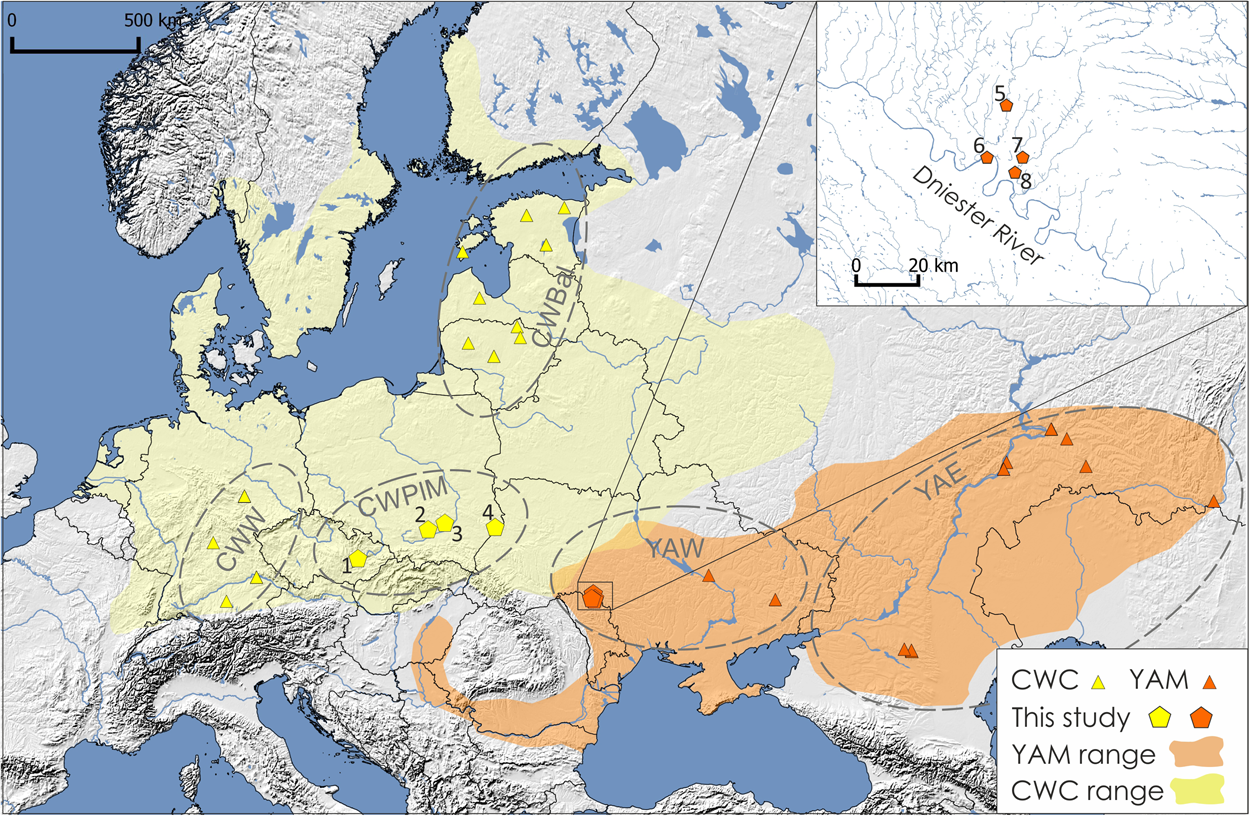Davidski at Eurogenes dishes rumors on upcoming academic journal publications in 2021:
Based on what I've heard from various reliable sources, here are some predictions about what we might see:- the search for the Proto-Indo-European homeland will shift west to the North Pontic steppe- on the other hand, the search for the Proto-Uralic homeland will move deep into Siberia- the key role of the Single Grave (westernmost Corded Ware) culture in the population history of Western Europe will finally get some attention- following on from the above, Y-haplogroup R1b-L51 will be revealed as a Single Grave marker- the idea that the Pontic-Caspian steppe was colonized by migrants from Mesopotamia during the Bronze Age will be put to bed, and, ironically, we'll instead learn that there was a significant influx of steppe ancestry into ancient Mesopotamia- Old Kingdom Egyptians will come out less Sub-Saharan African than present-day Egyptians.
All of these rumors are conclusions that are already predicted and suggested by existing data.
Image linked in the comments:

Location of archaeological sites used in this study. Extent of the Corded Ware culture (CWC) region and the Yamnaya horizon (YAM) are marked in yellow and orange, respectively. Groups of Corded Ware culture, including western (CWW), eastern (CWPlM) and Baltic (CWBal), and groups of Yamnaya horizon including western (YAW) and eastern (YAE), are marked in circles. Numbers represent archaeological sites from which analyzed individuals came from: (1) Držovice; (2) Malżyce; (3) Książnice; (4) Hubinek; (5) Klembivka; (6) Porohy; (7) Pidlisivka; (8) Prydnistryanske. The map was created using QGIS 2.12.2.
From here.
From the comments to the post:
ReplyDelete"Michalis Moriopoulos said...
Exciting times. We should hopefully see a final Dzudzuana study released next year.
In regards to ancient Greece (a perennial topic here), you posted this teaser on Anthrogenica back in June:
"Heard some stuff...
- Mesolithic Greeks are like Barcin farmers (or wrongly dated)
- Bronze Age samples range from quite a bit of steppe (clearly more than the current Mycenaeans) to basically none
- Iron Age/Hellenistic/Roman samples are also very heterogeneous, some clearly Anatolian
Let's wait and see.""